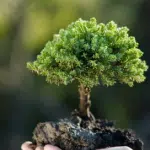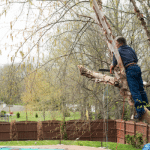Introduction to Tree Health Diagnosis
Maintaining the health of your trees is essential for a thriving landscape. At Strunk Tree Service, we recognize the significance of proactive tree health care, and in this blog, we’ll delve into the art of tree health diagnosis. By understanding the signs and symptoms of potential issues, you can ensure the longevity and vitality of your trees.
Observing Tree Appearance and Growth Patterns
One of the first steps in assessing tree health is a keen observation of its overall appearance and growth patterns. Anomalies in foliage color, size, and density can indicate underlying issues. If you notice sudden changes, it’s time to investigate further.
Leaf Color:
Pay attention to the color of the leaves. While variations are normal with the changing seasons, persistent discoloration – like yellowing or browning – may be a cause for concern.
Leaf Size and Shape:
Abnormal leaf size or shape can be indicative of nutrient deficiencies or pests. Inspect closely for irregularities that may affect the tree’s ability to photosynthesize effectively.
Foliage Density:
Sparse foliage, especially in concentrated areas, may signal issues such as root damage or disease. Trees with a healthy nutrient supply typically have a full and balanced canopy.
Branch Growth:
Observe the overall growth pattern of branches. Unusually slow growth or asymmetrical branching might suggest stress or an underlying health issue.
Detecting Signs of Pests and Diseases
Pests and diseases can wreak havoc on your trees if left unchecked. Identifying early warning signs is crucial for effective intervention.
Visible Pests:
Look for visible signs of pests such as insects, larvae, or webs on leaves and branches. Different pests leave distinctive markings, so be observant.
Bark Damage:
Examine the bark for any unusual markings, discoloration, or peeling. Bark damage can be a sign of pests, disease, or physical injuries.
Fungus Growth:
The presence of fungi on the trunk or around the base of the tree could indicate a fungal infection. Mushrooms growing at the base are particularly concerning.
Cankers and Lesions:
Cankers, which are areas of dead tissue on the bark, and lesions can be signs of diseases. Inspect the tree for any visible wounds or abnormalities on the bark.
Checking Soil Conditions
The health of a tree is closely tied to the condition of its roots and the soil in which it grows. Understanding soil conditions is paramount in tree health diagnosis.
Soil Moisture:
Check the moisture level around the tree’s root zone. Both excessively dry and waterlogged soil can cause stress to the tree.
Soil Compaction:
Compacted soil restricts root growth and can lead to poor nutrient absorption. Use a soil probe to assess the compaction level and consider aerating the soil if necessary.
Nutrient Deficiencies:
Soil tests can reveal nutrient deficiencies that may affect tree health. Adjusting the soil’s nutrient balance can promote better growth and vitality.
Root Health:
Inspect the roots for signs of decay or damage. Mushy, discolored roots may indicate root rot, while root girdling can impede proper nutrient absorption.
Assessing Environmental Stressors
Trees are sensitive to changes in their environment, and various stressors can impact their health. Identifying and mitigating these stressors is key to maintaining tree vitality.
Temperature Extremes:
Trees can suffer from extreme heat or cold. Sudden temperature fluctuations or prolonged exposure to adverse conditions may result in stress.
Drought Stress:
Lack of water can lead to drought stress. Monitor soil moisture levels and ensure trees receive adequate irrigation, especially during dry periods.
Compromised Air Quality:
Pollution and poor air quality can adversely affect tree health. Trees in urban areas are particularly susceptible to air pollution damage.
Physical Damage:
Evaluate the tree for any signs of physical damage, such as wounds from construction activities, lawn equipment, or storms.
Contact Strunk Tree Service for Professional Tree Care
If you’ve observed any signs of concern regarding the health of your trees or need expert advice on tree care, don’t hesitate to reach out to the experienced team at Strunk Tree Service. We specialize in comprehensive tree care services, from diagnosis to treatment and maintenance.
Maintaining the health of your trees requires a vigilant eye and proactive measures. By understanding the signs of potential issues, you can address problems early on and ensure the well-being of your landscape. For professional tree care services and personalized advice, contact Strunk Tree Service today. Your trees deserve the best care, and we’re here to provide it.




